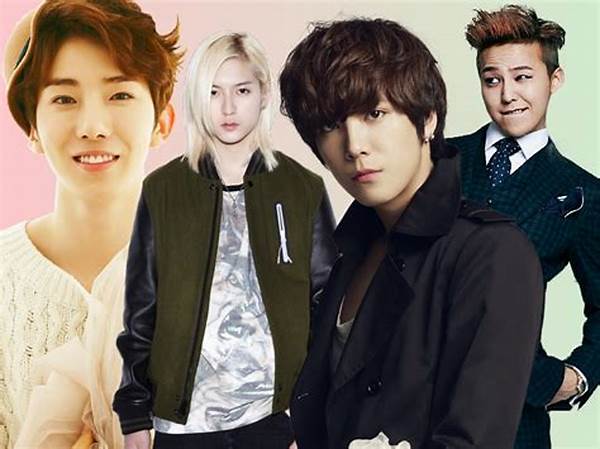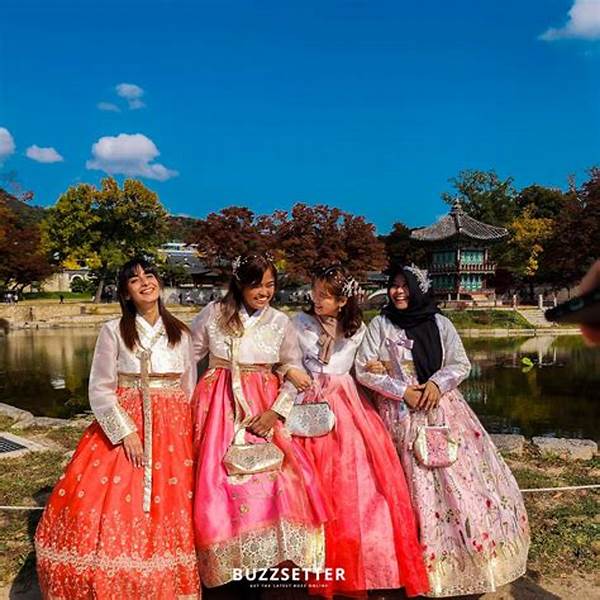Hey there, K-pop enthusiasts! If you’ve ever found yourself humming along to the catchy tunes of BTS or admiring the jaw-dropping aesthetics of BLACKPINK, you’ve probably noticed that K-pop isn’t just about the music—it’s a complex tapestry of fashion, visuals, and yes, gender roles. Let’s dive into how gender roles in K-pop culture are shaping the scene, challenging norms, and sometimes, raising eyebrows.
Read Now : Wallet-friendly Korean Boutiques
Challenging the Norms: How K-Pop Redefines Gender Roles
K-pop is a whirlwind of vibrant visuals and addictive beats, but it’s also a fascinating space when it comes to gender roles. One of the striking aspects is how K-pop idols challenge traditional gender expectations. Male idols don makeup, wear daring outfits, and aren’t afraid to show off their softer side. Similarly, female idols embrace powerful performances, often breaking out of the stereotypical “cute” mold to showcase strength, independence, and charisma. This breaking of stereotypes not only broadens the definition of masculinity and femininity but also encourages fans to rethink gender norms in their own lives.
Yet, despite these progressive moves, the industry is still a work in progress. There’s an ongoing push and pull between innovation and tradition, as companies and idol groups navigate the fine line between challenging norms and maintaining broad appeal. Gender roles in K-pop culture continue to evolve, offering a dynamic landscape that’s as exciting as it is complex. The flexibility in gender expression seen in K-pop isn’t just a trend; it’s a testament to the constantly shifting nature of cultural norms, mirroring broader societal changes.
Spotlight on Androgyny and Beauty Standards
1. Have you ever noticed how K-pop idols blur gender lines? With their perfectly curated looks, both male and female idols often embrace androgyny. This aspect of gender roles in K-pop culture allows for a more fluid expression of identity, welcoming diversity in style and aesthetics.
2. Beauty standards in K-pop are also gender-neutral, encouraging both men and women to follow rigorous skincare routines and maintain pristine appearances. Gender roles in K-pop culture emphasize that beauty isn’t limited to one gender, allowing fans to explore their own presentations.
3. The intense choreography often demands from idols a physical prowess traditionally associated with male performers. However, K-pop challenges this by promoting strength and agility as traits for all genders, redefining traditional gender roles in K-pop culture.
4. K-pop groups often have a mix of concepts that swap traditional gender roles, with men raising the standard for elegance and flair, while women embrace boldness and strength, reinforcing a dynamic spectrum.
5. With K-pop’s global outreach, the dialogue on gender roles in K-pop culture reaches international platforms, inviting a broader societal reflection on gender norms and expectations worldwide.
Gender Bending Fashion Trends in K-Pop
Fashion in K-pop is where gender roles really get tossed out the window in spectacular style. Guys in skirts? Girls in oversized suits? Absolutely! This playful approach shows how gender roles in K-pop culture are more about expression than rigid rules. Take idols like G-Dragon or Amber Liu, who have made headlines and captured hearts with their nonchalant embrace of such trends. This isn’t just about looking cool; it’s a statement.
These fashion choices send a powerful message: clothing is for everyone, regardless of gender. It’s a move that resonates with many fans, especially those exploring their own identities. And while some critics argue these trends only succeed because they’re part of the K-pop ‘package’, it undeniably opens up conversations about personal expression and counters traditional societal norms. Gender roles in K-pop culture thrive in spaces where both fun and reflection can coexist.
Fan Influence on Gender Roles in K-Pop
Fans play a huge role in shaping gender roles in K-pop culture. Their support allows idols to push boundaries and experiment with gender expressions that might otherwise be stifled. Here are 10 ways they influence:
1. Online platforms amplify diverse expressions, reaching global audiences.
2. Fans often demand themes that challenge traditional norms.
3. Audience reactions can steer company strategies toward inclusivity.
4. Creative fan content spreads innovative ideas and interpretations.
Read Now : Ateez Trendy Hair Fashion
5. Audience feedback helps break down stereotypes, encouraging new roles.
6. Global community support validates idols’ unconventional styles.
7. Fan discussions spotlight inconsistencies, prompting industry adjustment.
8. Continuous engagement fosters an environment open to change.
9. The profound global fan base encourages cross-cultural exploration.
10. Ultimately, fans’ power molds the commercial success of diverse idols.
Societal Impact of Gender Roles in K-Pop
As K-pop continues to capture global hearts, its influence extends beyond music and fashion. The same daring trends in K-pop often spark discussions on wider social platforms, maintaining the momentum for change. Gender roles in K-pop culture don’t just entertain—they challenge and inspire. By pushing boundaries, these idols encourage fans to explore their own identities and challenge societal norms. It’s a creative kingdom where diversity is not only accepted but cherished—a refreshing change from rigid expectations.
Despite this, the pressure for idols to conform to certain standards still exists. The industry remains a balancing act of innovation and tradition, as idols navigate expectations from both fans and management. Companies are tasked with the challenge of staying relevant while respecting cultural boundaries and supporting their artists toward authentic self-expression.
Future Directions of Gender Roles in K-Pop
Looking towards the future, gender roles in K-pop culture will likely continue to evolve as societal norms shift. As industry leaders, artists, and fans push for environments where creativity thrives, K-pop could become a beacon of progressive gender expression. Setting trends globally, K-pop has the potential to nudge other industries toward more inclusive representations, sparking new conversations around the world. It will be interesting to see how this influential industry continues to shape and redefine perceptions of gender in the years to come.
Wrapping Up: The Continuing Evolution of Gender Roles in K-Pop
In the end, gender roles in K-pop culture reflect both the contradictions and the progress happening across the entertainment industry. It’s an ever-evolving conversation that invites us all to think critically about how we define gender and expression. Whether it’s through fashion, music, or dance, K-pop provides a unique platform where traditional norms are constantly being questioned.
As fans, we have front-row seats to this ongoing spectacle—an interaction between innovating agencies, daring idols, and supportive fans shaping cultural narratives. The future of gender roles in K-pop is not just the industry’s journey; it’s part of a broader dialogue about identity, empowerment, and acceptance. And who knows? Maybe one day, all industries will take a page from K-pop’s vibrant, groundbreaking playbook.


